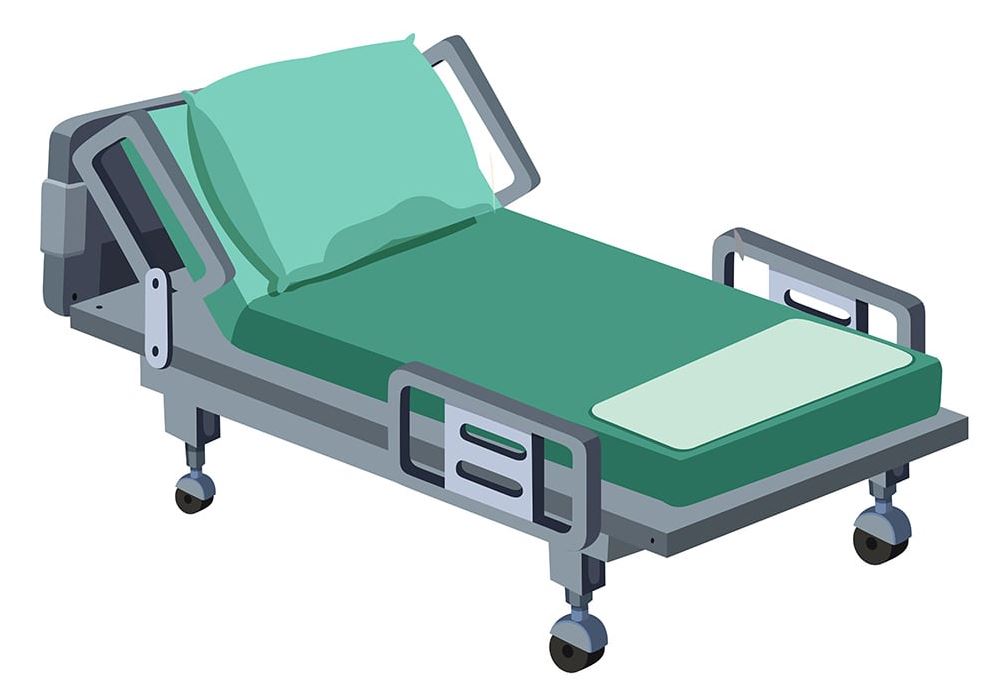
Quick Summary:
Keeping hospital beds in good condition improves patient comfort and safety. This is what makes regular maintenance so important.
You don’t have to clean everything all at once. Whether weekly, monthly, or as needed, each home hospital bed component has a different cleaning and inspection frequency. Always use caution and disconnect power before cleaning moving parts.
Rotate the mattress often to increase its longevity and replace it when it no longer provides adequate support.
Click a link to jump to the section.
- Introduction
- Overview of Key Areas To Focus On: Frame, Mattress, Motorized Parts, and Bedding
- Step-by-Step Guide To Cleaning a Home Hospital Bed
- Cleaning the Bed Frame and Side Rails
- Cleaning and Disinfecting the Mattress
- Washing and Replacing Bed Linens
- Cleaning Motorized and Electrical Components (For Electric Hospital Beds)
- Routine Maintenance Checklist for a Home Hospital Bed
- Checking for Loose or Worn-Out Parts
- Lubricating Moving Parts
- Testing the Bed’s Adjustment Features
- Inspecting the Mattress for Wear and Tear
- How Often Should You Clean and Maintain a Home Hospital Bed?
- Tips for Keeping a Home Hospital Bed in Optimal Condition
- Conclusion
Introduction
Regularly cleaning and maintaining home hospital beds is critical in preventing infection in home healthcare. Following best cleaning practices for medical equipment plays an important role in improving patient comfort, preventing infections, and extending the lifespan of a hospital bed.
Overview of Key Areas To Focus On: Frame, Mattress, Motorized Parts, and Bedding
Cleaning every component of your home hospital bed may seem intimidating, but it makes a difference over time. We recommend establishing a cleaning routine to ensure the entire bed stays clean, especially the frame, mattress, motorized parts, and bedding.
Step-by-Step Guide to Cleaning a Home Hospital Bed
Cleaning the Bed Frame and Side Rails
Wiping down the bed frame and side rails is a good place to start. Use a damp cloth and mild cleaner when disinfecting hospital bed surfaces. As you wipe down the metal and plastic bed components, check for any loose bolts or damage. Regular cleaning helps keep your hospital bed structurally sound while preventing bacteria buildup.


Cleaning and Disinfecting the Mattress
We highly suggest using waterproof hospital bed mattress covers as a preventative measure against leaks, spills, and stains.
Wipe down your mattress regularly with medical-grade disinfectants or sprays.
Allowing the mattress to dry completely before remaking the hospital bed promotes overall hygiene by preventing mold and bacteria growth.
Washing and Replacing Bed Linens
Regularly washing hospital bedding helps prevent bacteria buildup and reduces the risk of infection. Change hospital bed sheets as often as you would any other bed at home. For best results, wash bedding in hot water and antibacterial detergent.
For patient comfort, consider moisture-wicking bed sheets for home care. This type of bedding helps keep the patient cool and dry. We also recommend hypoallergenic linens for those with sensitive skin.
Cleaning Motorized and Electrical Components (For Electric Hospital Beds)
Always disconnect the bed from its power source before cleaning any electrical components. Check the power cords for any damage or frays.
Wipe remotes and control panels with a dry rag to prevent dust buildup.
Routine Maintenance Checklist for a Home Hospital Bed
Regularly inspecting your hospital bed helps improve patient safety. Check for loose or broken parts, lubricate moving components, test the adjustment features, and watch for mattress wear and tear.
Checking for Loose or Worn-Out Parts
Inspecting bed rails for safety protects the patient and provides peace of mind for the caregiver. We recommend doing so regularly.
Start by checking the manual crank bed adjustment and locking mechanisms, ensuring the bed rails are securely locked. Then, examine the rest of the hospital bed, tightening any loose screws and bolts.
Replace any broken or worn-out components immediately to ensure continued safety.
Lubricating Moving Parts
Lubricant helps prevent squeaky hospital bed hinges, joints, and adjustable frames.
Routinely check wheel casters and locks. Apply lubricant as needed to ensure smooth movement.
Testing the Bed’s Adjustment Features
Once each month, we recommend examining the moving parts of your hospital bed. Sometimes, issues will present themselves without you inspecting the frame. However, prevention is the best medicine. Keeping a close eye on adjustable parts can prevent costly repairs further down the road.
Regularly checking the manual and electric bed functions ensures smooth hospital bed head and foot adjustments. Always verify that remote controls and manual levers function properly. Be sure to immediately fix unresponsive remote controls and bed adjustment levers to restore patient comfort and convenience.
Inspecting the Mattress for Wear and Tear
Many patients will use their hospital beds for extended periods. For this reason, it’s imperative to know when to replace an old mattress.
Signs of Mattress Wear in Home Care Beds
- Sagging middle
- Inadequate support
- Sweat and other bodily fluid stains
We recommend rotating the mattress periodically to increase its longevity.
How Often Should You Clean and Maintain a Home Hospital Bed?
Regular maintenance helps prevent bedsores and keeps home hospital beds in top condition. Here are some long-term hospital bed care tips.
Recommended Hospital Bed Maintenance Frequency
- Every Day: Wipe side rails, remote controls, and other high-touch areas
- Once per Week: Change bedding and disinfect the bed frame
- Once per Month: Check for damages and lubricate moving parts
- As Needed: Replace broken or worn-out components
Tips for Keeping a Home Hospital Bed in Optimal Condition
- Protect the mattress with a cover to help prevent stains from bodily fluids
- Keep the area surrounding the hospital bed clutter-free with storage solutions such as drawers, cubbies, boxes, or bins.
- Store replacement parts, cleaning supplies, and medical accessories nearby for convenience


Conclusion
Keeping medical beds clean and functional allows you to continue using them long-term and could save you thousands of dollars in the long run. Following the best cleaning practices with small tasks makes hospital bed maintenance less daunting. We recommend creating a cleaning schedule and checklist to ensure regular maintenance of the entire hospital bed.
Vitality Medical sells a range of cleaning supplies. Call our friendly customer service team with questions about warranties or replacement parts.

Login and Registration Form